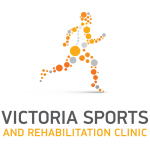What is Osgood Schlatters and why does it happen?
Osgood-Schlatter disease is a common condition of the knee which mainly affects children and adolescents. It involves inflammation of the tip of the shin bone (tibial tuberosity), which is just below the knee cap. This is where the tendon from your quadricep muscle (patellar tendon) comes down and inserts.
Osgood-Schlatters normally occur during growing phases, as muscles, bones and ligaments all grow at different rates. With repetitive activity and pulling of the tendon, swelling can form around the attachment which is near the growth plate. This pulling on the attachment causes inflammation which can cause pain and discomfort through this area. As the area stays inflamed with repeated friction reactive bone growth begins to grow.
The most common complaint with Osgood-Schlatters disease is pain below the knee cap which is worse with activity and relieved at rest. Swelling is often also noted and general tightness in the legs especially at the back of the leg. Unfortunately it occurs more commonly in boys (between the age of 13 and 14) more than girls (between the ages of 11 and 12), especially in those who take part in high intensity sports that include running and jumping.
The good thing about osgood-schlatter disease is that it is self-limiting. This means that with time, the condition should improve and discomfort should reduce. However it is important to manage the condition properly so that there are no long term complications and to keep your child engaged in sport.
What do I do if my child is experiencing knee pain?
If your child is experiencing knee pain that doesn’t seem to be improving on it’s own it is very important to take them to a healthcare professional so that other conditions can be excluded. If Osgood-Schlatters is diagnosed they will discuss the best treatment and activity modification plan for them.
Your practitioner will also assess as to whether any other postural or biomechanical issues have predisposed the knee to having the condition and if so will treat and manage them to help relieve the condition. Manual therapy including massage, stretching and joint techniques are useful in both reducing pain and increasing range of motion to help the condition. Exercises and stretches are commonly prescribed to help manage it as well as the possibility of referrals to other health professionals such as podiatrists and orthotists if needed.
Avoidance of aggravating activities is the best way to manage this condition in children, however it can be very difficult to stop an avid footballer from playing! Children may still be able to participate in the sports they love, they will just need to modify it to ensure it is pain free for them. This means that they will be reducing the load on the tendon and preventing further injury.
Using ice over the knee when it is painful and swollen can also provide relief from the discomfort and help with swelling and some forms of taping with rigid tape and rocktape can be beneficial. As well as ensuring that all participants in sport have a solid warm-up routine before exercise to make sure the quads muscle in particular is not tight.
Most symptoms will completely disappear when a child completes the adolescent growth spurt, which is around the age of 14 for girls and age 16 for boys. For this reason more serious intervention such as surgery is rarely recommended. However many children can be left with an increased bony prominence at the top of the shin bone long term.
If you have any questions at all about knee pain in children or think that your child may be suffering from Osgood-Schlatters, please contact us at the clinic.
